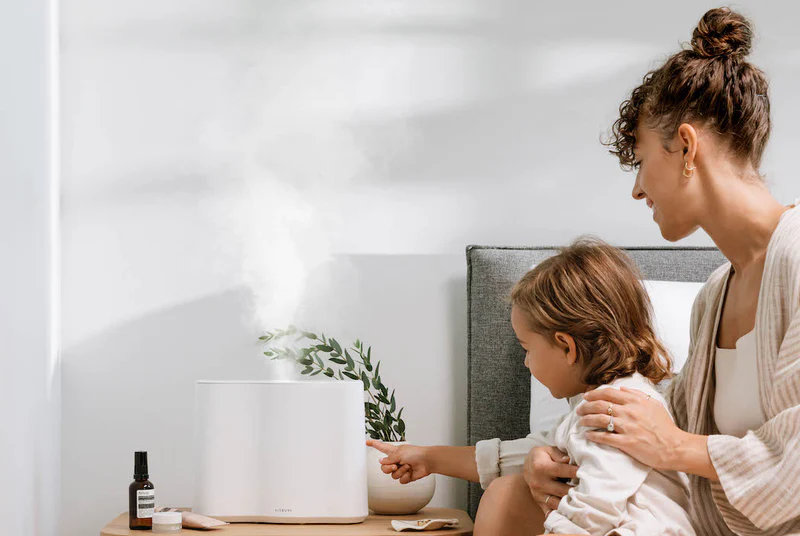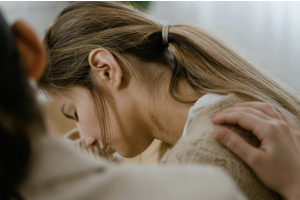A Parent’s Guide to Using Essential Oil Blends for Kids: Safe Tips and Benefits

Whether you are using a diffuser, room spray, or a warm bath to use your essential oils, there are many ways to get your kids to use them.
Since a child’s skin is still developing and much more sensitive than ours, it is best to be more cautious about what comes into contact with it - even if it is all natural.
This quick guide will discuss tips and tricks for safely using essential oil blends for kids, as well as their benefits.
Safety Tips for Using Essential Oils on Kids

Here are a few things to keep in mind and consider before using essential oil blends for diffusers around children.
Double Check or Avoid “Hot Oils”
Hot oils do not refer to temperature but rather the intense, warming sensation they create when applied to the skin. This may be ideal for adults but not so much for kids.
Some children have very sensitive skin and may find the sensation to be too intense or even painful. This means hot oils should typically not be used for kids.
If you have already used it on your child and they complain of a burning sensation, make sure to dilute it with another oil and then wash it off with cold water.
Do a Patch Test First
Before using any essential oil on your child’s skin, you should do a patch test. Apply a small amount of the oil on one part of their skin to see how it reacts.
After applying the oil, leave it on according to the manufacturer’s instructions to check how it reacts with their skin. Use carrier oils to dilute the essential oil as necessary.
Once you get the desired results and your child has no allergic reactions to the oil, then you can apply it to other areas like behind their ears or their neck.
NOTE: If your child does not experience any reactions after a few minutes, wait for a further 24 hours before using the essential oil further, whether through diffuser or topical application.
Only Apply on Safe Skin Zones
Even after patch-testing the essential oil, only apply it to areas such that your child cannot accidentally rub it into their eyes or ingest it.
Essential oils should be used according to their advertised use only. Using them in other ways can be dangerous to your child.
Therefore, it is recommended to apply it away from the eyes and mouth.
Use in Smaller Doses
Since children have more sensitive skin and are a lot smaller than adults, they will need smaller doses of essential oils. We also recommend further diluting any oils used on them for safety.
Many essential oils that are child-safe also come with dosage instructions specific to kids, which you should follow. If there are no instructions on the bottle, try contacting the manufacturer or researching online first.
If all else fails, do a patch test.
Use Essential Oil Blends With Carrier Oils
Carrier oils like coconut, jojoba, crambe abyssinica, or argan oil can be mixed with essential oils to safely dilute the concentration. This will make your essential oils safer for your children.
Using a carrier oil is highly recommended as most essential oils are very concentrated. Diluting it can still bring the same benefits while reducing the intensity.
Carrier oils are also an effective way to reduce any pain or discomfort your child might feel with an essential oil before washing it off with cold water and soap.
Keep Them in Safe Storage
As with any non-beverage liquids in your home, you should keep essential oils and carrier oils out of reach of children. This can prevent unwanted accidents like ingestion.
Preventing accidental ingestion is important, but keeping your oils safe from accidents like being knocked over the table and breaking can save you a lot of stress.
Limit Essential Oils Used Around Small Children
Despite the benefits they can provide to adults and older children, essential oil usage should be limited to children aged 3 or above.
The risks of skin injury and potential reactions from essential oils are not well-studied in children younger than 3.
You should also note that not every essential oil may be beneficial for your child. To be safe, stick to essential oils like lavender or citrus-based oils.
Creating a Soothing Environment for Kids With Essential Oils
Parents should take note of the following tips to maximize their essential oil use and for their children’s health.
Proper Placement
If you are diffusing essential oils throughout an area, ensure it is placed away from any heat sources. These oils are flammable and may start fires if placed near a heat source.
In addition, ensure they are placed on stable surfaces to avoid potential spills and accidents. We also recommend placing your diffusers in areas with less foot traffic to prevent your kids from accidentally bumping into them.
Prioritizing Ventilation
Before using essential oils near your kids, ensure the room is well-ventilated. Open a window and draw the curtains to disperse the scent in a specific direction.
Plus, keep a door slightly open so that your children can easily leave in case they decide they dislike the smell after some time.
Benefits of Using Essential Oils for Kids
Using essential oils on children can bring many benefits if used properly. Here are some of the benefits they bring.
Promotes Better Sleep

There are many essential oil blends that can help your child sleep easier at night. This can help sleep-deprived parents who are having difficulty putting their kids to bed.
In addition, the same oil can also be used on adults - meaning both the kids and their parents can sleep easy and wake up feeling recharged.
Better Skin Health
Essential oils can help relieve skin symptoms like eczema, dry patches, and itchy skin while also lessening irritation that comes from typical active toddler bumps, scrapes, and bruises.
This can help your child be more comfortable during the day instead of constantly being irritated by their skin.
Less Harmful Than Other Forms of Aromatherapy
Essential oils are more environmentally friendly than other forms of aromatherapy, such as scented candles, when used with scent diffusers or applied topically.
The main benefit that essential oils have over scented candles is the reduced amount of volatile organic compounds (VOCs) they produce, which can be harmful when inhaled.
Some essential oil manufacturers also dilute their products with fillers or additives which may be harmful when inhaled or applied to the skin. You can avoid this by buying pure oils.
Despite the purity of your essential oils, note that some fragrances may trigger allergic reactions in sensitive or asthmatic children and individuals.
Ensure your child is comfortable with the scent before diffusing it.
Relieves Allergies
Some essential oils have the ability to reduce or eliminate the effects of allergies like skin irritation, runny or stuffy nose, or a headache.
This can massively improve a child’s experience throughout the day. For example, a child who is allergic to pollen will not have to constantly stay indoors just to avoid the symptoms.
These can be applied both before your child goes to school or even after allergy symptoms have started to appear. Make sure to bring one with you when out and about.
Can Calm Kids Down
Most parents can relate to stories of kids endlessly running around the house. Essential oils can calm down overly excited behavior without knocking them out to sleep.
This is amazing for use when attending gatherings or events where proper decorum is needed, like formal family gatherings and weddings.
Conclusion
Essential oils for kids can bring many great benefits like calming them down, relieving allergies, promoting better sleep and skin health just to name a few.
However, you should apply these essential oils properly. Remember to do a patch test before putting them in a diffuser near your kids, and use it only in well-ventilated areas.
Applying essential oils properly can make the experience enjoyable for you and your child.






